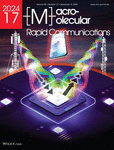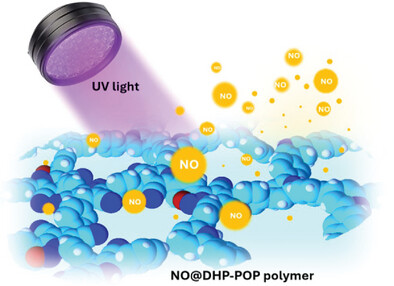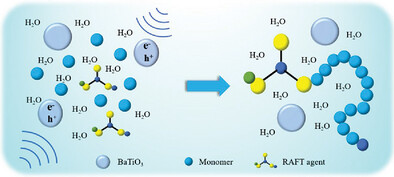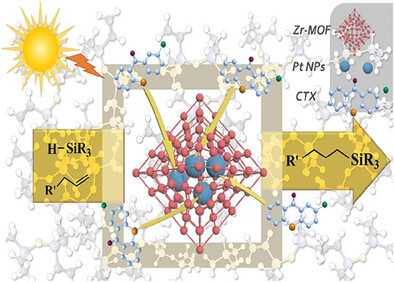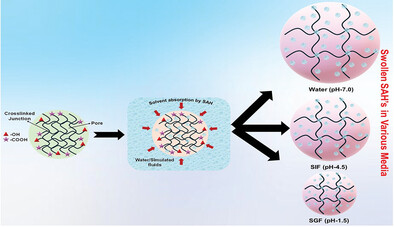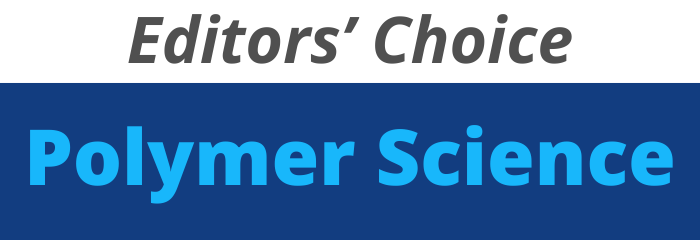Journal list menu
Export Citations
Download PDFs
Cover Picture
Crosslinking Vinyl-Addition Polynorbornenes via Difunctional Diazirines to Generate Low Dielectric-Constant and Low Dielectric-Loss Thermosets
- First Published: 08 September 2024
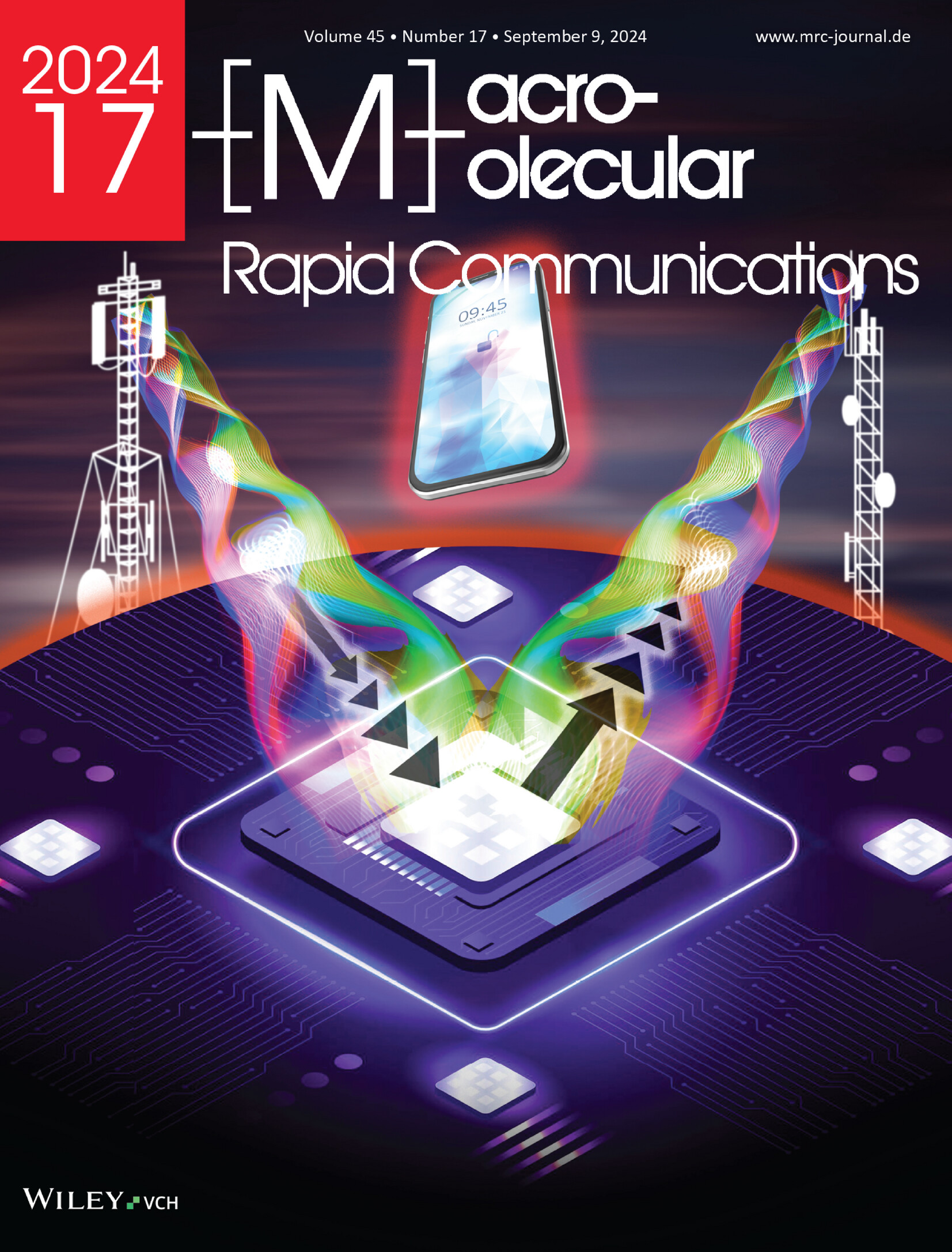
Front Cover: 5G and 6G telecommunications devices operate at high frequencies, necessitating the use of photoactive polymer compositions with ultra-low dielectric constants and dissipation factors. In article 2400200, Jeremy E. Wulff, Larry F. Rhodes, and co-workers use electronically optimized diazirine reagents to crosslink and photopattern low-dielectric poly(norbornenes).
Masthead
Review
Challenges to Improve Extrusion-Based Additive Manufacturing Process of Thermoplastics toward Sustainable Development
- First Published: 31 May 2024

This study examines the major aspects of improving the sustainability of thermoplastic-based 3D printing by replacing synthetic raw materials with natural-based systems, or materials derived from renewable sources or recycled, and providing alternatives to reduce energy consumption and polluting emissions. The negative implications of each option on the printability, performance, and aesthetic quality of 3D parts have been discussed further.
Recent Advances in Smart Self-Assembled Bioinspired Hydrogels: A Bridging Weapon for Emerging Health Care Applications from Bench to Bedside
- First Published: 27 May 2024
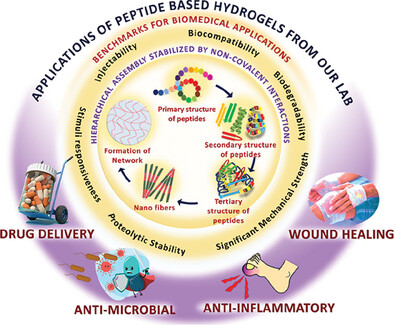
This review focuses on two different aspects. First, the underlying guidelines and principles for building multifaceted biomimetic strategies to tailor scaffolds that lead to hydrogelation, and second, successful in bringing to the forefront, the recent achievements with designer assembly mainly in the biomedical arena like drug delivery carrier design, antimicrobial, anti-inflammatory as well as wound healing materials.
Unlocking the Potential of Polythioesters
- First Published: 02 June 2024
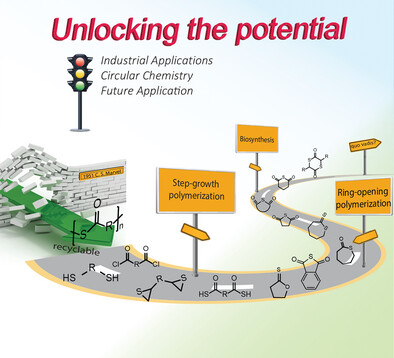
Polythioesters have introduced numerous innovative perspectives to polymer chemistry since their ground-breaking synthesis in 1951. As the sulfur-containing analogues of polyesters, polythioesters hold considerable promise as sustainable materials. However, the potential of polythioesters has yet to be fully harnessed, and challenges persist in achieving industrial-scale production. This review examines recent advancements, aiming to encourage further exploration into sustainable polythioester materials.
Research Article
Crosslinking Vinyl-Addition Polynorbornenes via Difunctional Diazirines to Generate Low Dielectric-Constant and Low Dielectric-Loss Thermosets
- First Published: 14 June 2024
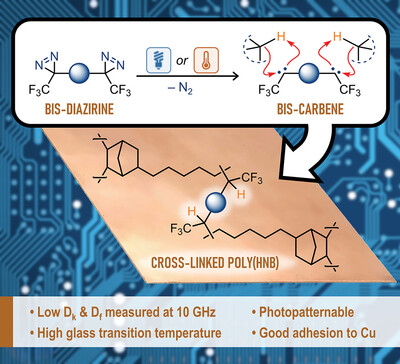
Three generations of diazirine crosslinkers are evaluated for their ability to generate thermosets using a low-dielectric poly(norbornene) lacking functionality beyond carbon–carbon and carbon–hydrogen bonds. An electronically optimized diazirine affords superior photopatterning. Both photochemical and thermal crosslinking using this diazirine gave poly(norbornene) thermosets with low dielectric constant and loss at 10 GHz, and good reliability after high-temperature/high-humidity treatment.
UV Light-Driven Nitric Oxide Release from Porous Nitrogen Heterocyclic Polymers
- First Published: 27 June 2024
PEDOT:PSS-Based Prolonged Long-Term Decay Synaptic OECT with Proton-Permeable Material, Nafion
- First Published: 25 June 2024
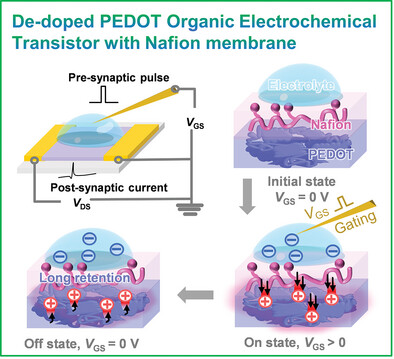
This study explores the mechanism and performance of organic electrochemical transistors (OECTs) utilizing de-doped poly(3,4-ethylenedioxythiophene) active layers and Nafion ion-selective membranes. The research investigates ion transport and electrical characteristics in both oxidized and reduced states. Findings demonstrate how material engineering enhances OECT functionality in bioelectronics and organic electronics.
BaTiO3 Catalyzed Ultrasonic-Driven Piezoelectric-Induced Reversible Addition-Fragmentation Chain-Transfer Polymerization in Aqueous Media
- First Published: 14 May 2024
Carbohydrate-Based Reprocessable and Healable Covalent Adaptable Biofoams
- First Published: 25 May 2024
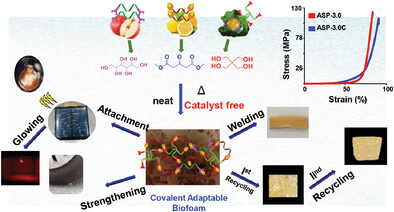
Covalent adaptable biofoams (CABs) synthesized from biobased resources, such as carbohydrates & diester precursors and under catalysts free conditions exhibit adequate mechanical properties. The CABs are promising for various polymeric foam-based applications. With further structure–property optimization, these CABs may be a sustainable and environmentally compatible substitute for conventional PU-based foams.
Novel Sprayable Antioxidative Dressing Based on Fullerene and Curdlan for Accelerating Chronic Wound Healing
- First Published: 14 June 2024
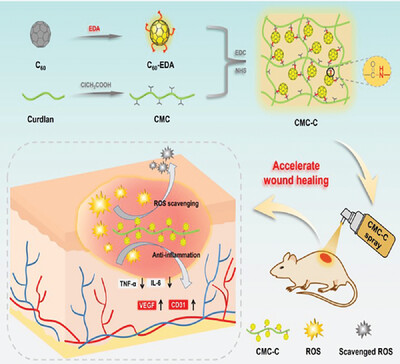
A novel sprayable dressing with water-soluble fullerene and curdlan derivative is constructed, which exhibits excellent biocompatibility, antioxidant properties, and reactive oxygen species scavenging abilities. Furthermore, the spray displays excellent capacities of reducing inflammatory factors, promoting local angiogenesis, and accelerating the healing of chronic wound caused by chemical injury efficiently. It represents a hopeful sprayable dressing for clinical therapy on chronic wound.
Photocatalytic Hydrosilylation over Pt@UiO-66-NH2: Enhanced Activity and Polymerization Kinetics
- First Published: 13 June 2024
Thermally Stable and Transparent Polyimide Derived from Side-Group-Regulated Spirobifluorene Unit for Substrate Application
- First Published: 16 July 2024
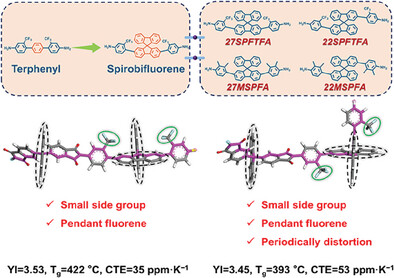
Four highly rigid spirobifluorene polyimides are designed, and their optical properties are successfully regulated by small side groups and periodic distortions. These units enable well-balanced thermal and optical properties in CPIs, with 27SPFTFA-BPAF showing optimal performance (Tavg = 86%, YI = 3.53, Tg = 422 °C, CTE = 35 ppm K−1, δmax = 140 MPa).
Synthesis, Crystal Structure, and Photophysical Properties of Bromothiophene-Functionalized BF2-Curcuminoid as a Versatile Building Block
- First Published: 24 June 2024

A novel bromothiophene-functionalized BF2-curcuminoid (BTC-BF2) is synthesized by Knoevenagel condensation reaction, whose structure is determined by 1H-nuclear magnetic resonance (1H NMR), 13C-nuclear magnetic resonance (13C NMR), high-resolution mass spectrometry (HRMS), and X-ray diffraction. As expected, BTC-BF2 exhibits solvent-dependent photophysical properties, red solid-state fluorescence, and generation of singlet oxygen. Therefore, BTC-BF2 can be utilized as versatile building block to construct novel far-red or NIR BF2-curcuminoid complexes for widely biological applications.
2D Porphyrin-Based Covalent–Organic Framework/PEG Composites: A Rational Strategy for Photocatalytic Hydrogen Evolution
- First Published: 04 June 2024
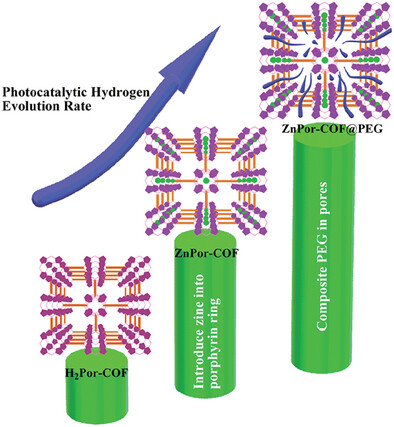
Introducing cheap and safe zinc into the porphyrin ring and compositing polyethylene glycol (PEG) are two reasonable ways to improve the photocatalytic hydrogen evolution performance of 2D por-COFs. As expected, ZnPor-COF@PEG has the highest photocatalytic hydrogen evolution efficiency, which is 1.31 and 3.7 times that of ZnPor-COF and H2Por-COF, respectively.
Structural and Property Characterizations of Dual-Responsive Core–Shell Tecto Dendrimers for Tumor Penetration and Gene Delivery Applications
- First Published: 30 May 2024
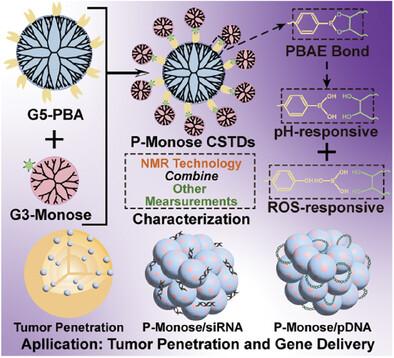
Core–shell tecto dendrimers with dual responsivenesses have been designed through phenylborate ester bonds between phenylboronic acid-decorated generation 5 poly(amidoamine) dendrimers as cores and monose-conjugated generation 3 dendrimers as shells. The materials are thoroughly characterized by NMR and other technologies, and applied for tumor penetration and gene delivery of small interfering RNA and plasmid DNA with desired performances.
Gamma-Irradiated Gum Arabic Grafted with 2-Hydroxyethyl Methacrylate: A Novel Superabsorbent Polymer for Controlled Folic Acid Release
- First Published: 17 July 2024
Aqueous Supramolecular Transformations of Motor Bola-Amphiphiles at Multiple Length-Scale
- First Published: 28 May 2024
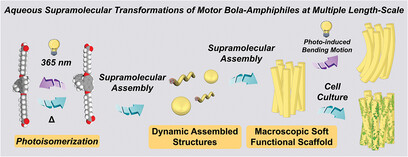
Molecular motor bola-amphiphiles (MBAs) assemble by a supramolecular fashion across molecular level to microscopic dynamic structures, and up to macroscopic soft scaffolds. The photoresponsiveness of MBAs propagate across multiple length-scale through supramolecular assembly in triggering photoactuation. MBAs soft scaffolds serve as cell-material interfaces, illustrating for smart biomaterials.
Selective and Sensitive Detection of Fe3+ Ions Using a Red-Emissive Fluorescent Probe Based on Triphenylamine and Perylene-Linked Conjugated Microporous Polymer
- First Published: 15 June 2024
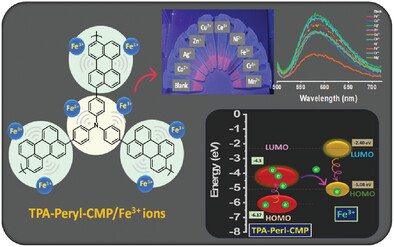
A fluorescent material, TPA-Peryl-CMP, is created by synthesizing triphenylamine and perylene-linked conjugated microporous polymer using the Suzuki reaction. This material demonstrates impressive thermal stability, boasting a Td10 of 694 °C and a char yield of 87 wt%. TPA-Peryl-CMP also serves as a chemosensor for detecting Fe3+ ions, exhibiting a low detection limit of 20 nM.
Interfacial Charge Transport Enhancement of Liquid-Crystalline Polymer Transistors Enabled by Ionic Polyurethane Dielectric
- First Published: 17 May 2024
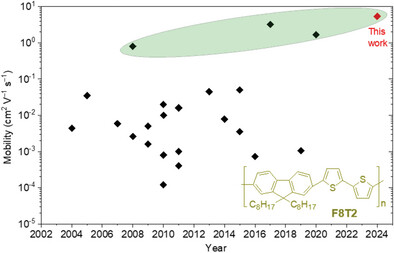
High-capacitance ionic polyurethane (PU) dielectrics for organic field-effect transistors (OFETs) with poly(9,9-dioctylfuorene-co-bithiophene) (F8T2) polymer semiconductor are developed. The optimized OFETs show high hole mobilities of over 5 cm2 V−1 s−1 with bias-stable operational characteristics, attributed to the enhanced interfacial charge transport with low interface traps.
Wide Bandgap Polymer Donors Based on Succinimide-Substituted Thiophene for Nonfullerene Organic Solar Cells
- First Published: 03 June 2024

Succinimide-substituted thiophene is utilized for the first time to synthesize semiconducting wide bandgap polymer donors to pair with nonfullerene narrow bandgap acceptors, demonstrating its potential as a useful electron-withdrawing building block for the development of high-performance organic solar cells.
Strengthening-Durable Trade-Off and Self-Healing, Recyclable Shape Memory Polyurethanes Enabled by Dynamic Boron–Urethane Bonds
- First Published: 21 May 2024
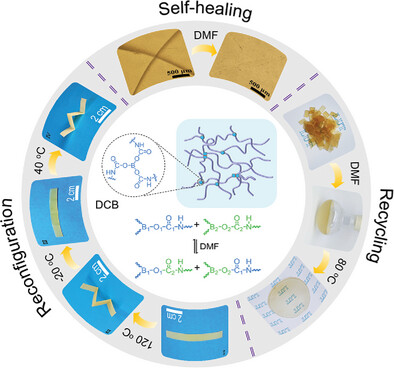
The incorporation of dynamic boron–urethane bonds effectively enhances the strength and toughness of polyurethanes, while imparting self-healing, recyclable, and shape reconfigurable properties to shape-memory polyurethane materials. Self-healing and recycled samples maintain almost all of their original mechanical properties, which provide a new strategy to ensure that SMPUs balance high strength and durability.




